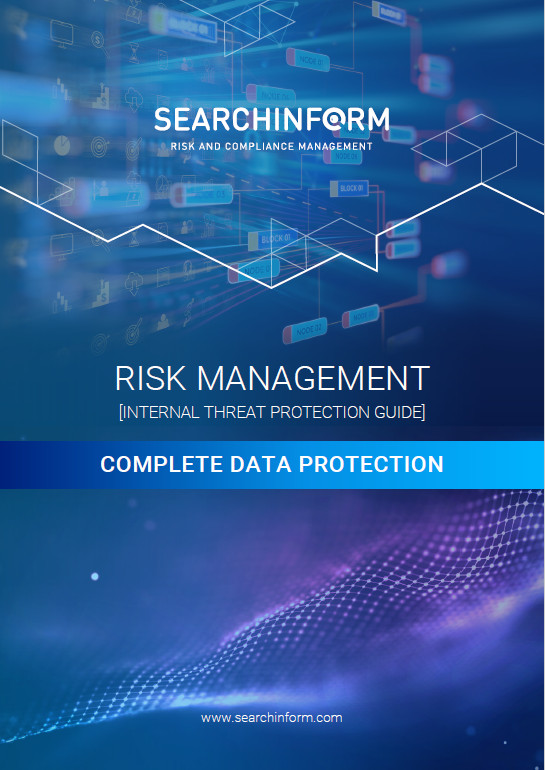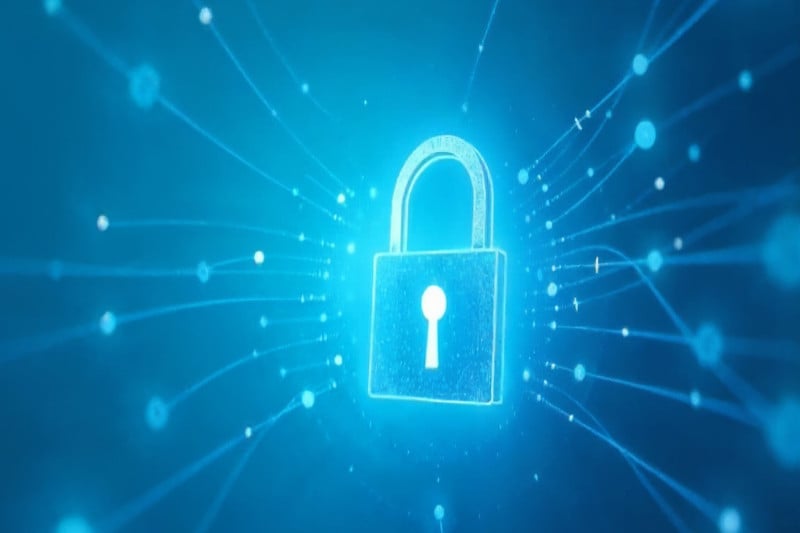Network Security Best Practices: A Comprehensive Guide
- Introduction to Network Security Best Practices
- Importance of Network Security
- Why Network Security Matters
- Protecting Data Integrity and Privacy
- Mitigating Cyber Threats
- Key Network Security Best Practices
- The Foundation: Strong Authentication Mechanisms
- Implementing Multi-Factor Authentication (MFA)
- Regularly Updating and Managing Passwords
- Securing Network Infrastructure
- Firewalls and Intrusion Detection Systems
- Segmentation and Isolation
- Continuous Monitoring and Regular Audits
- Real-Time Network Monitoring
- Conducting Regular Security Audits
- Educating and Training Employees
- Creating a Security-Aware Culture
- Implementing Clear Security Policies
- Keeping Systems and Software Up-to-Date
- Patch Management
- Securing Endpoints
- Advanced Threat Detection and Response
- Utilizing AI and Machine Learning
- Implementing Threat Intelligence
- Data Encryption and Secure Communication
- Encrypting Data at Rest and in Transit
- Using Virtual Private Networks (VPNs)
- Incident Response and Recovery Planning
- Developing an Incident Response Plan
- Conducting Post-Incident Analysis
- Leveraging Security Frameworks and Standards
- Adopting Industry-Recognized Standards
- Regular Compliance Audits
- The Human Element: Fostering a Security-First Mindset
- Empowering Employees with Knowledge
- Encouraging a Proactive Approach
- Future-Proofing Your Network Security
- Embracing Emerging Technologies
- Building a Resilient Security Strategy
- Collaborative Security Efforts
- Participating in Information Sharing Networks
- Engaging with Cybersecurity Communities
- The Role of Governance and Leadership
- Establishing a Security Governance Framework
- Regular Reporting and Accountability
- Adapting to the Evolving Threat Landscape
- Staying Informed About Emerging Threats
- Investing in Continuous Improvement
- Comprehensive Security Policy Development
- Creating Clear and Enforceable Policies
- Regular Policy Reviews and Updates
- Leveraging Cloud Security Solutions
- Securing Cloud Environments
- Implementing Cloud-Specific Security Practices
- Enhancing Endpoint Security
- Comprehensive Endpoint Protection
- Implementing Mobile Device Management (MDM)
- Embracing Zero Trust Architecture
- Understanding Zero Trust
- Implementing Zero Trust Principles
- Security Awareness and Training Programs
- Building a Culture of Security
- Continuous Learning and Adaptation
- Utilizing Advanced Security Technologies
- Artificial Intelligence and Machine Learning
- Behavioral Analytics
- Regular Security Assessments and Penetration Testing
- Identifying Vulnerabilities
- Simulating Attacks
- A Holistic Approach to Network Security
- How SearchInform Solutions Enhance Network Security
- Proactive Threat Detection and Prevention
- Real-Time Monitoring and Analysis
- Comprehensive Data Loss Prevention (DLP)
- Incident Lifecycle Management
- Streamlined Incident Response
- Forensic Investigation and Analysis
- Enhancing User Activity Monitoring
- Behavioral Analytics for Insider Threats
- Comprehensive Reporting and Alerts
- Data Encryption and Secure Communication
- Encryption for Data at Rest and in Transit
- Secure Remote Access Solutions
- Advanced Risk Management
- Comprehensive Risk Management Framework
- Continuous Improvement and Compliance
- Regular Security Audits and Assessments
- Ensuring Regulatory Compliance
- Final Thoughts: Building a Secure Future with SearchInform
- Use Case Scenario: Enhancing Network Security with SearchInform Solutions
- Scenario: Strengthening Network Security
- The Cybersecurity Challenges
- The Solution: SearchInform's Comprehensive Approach
- Step 1: Comprehensive Data Loss Prevention (DLP)
- Step 2: Real-Time Monitoring and Behavioral Analytics
- Step 3: Streamlined Incident Response
- Step 4: Enhanced User Activity Monitoring
- Step 5: Data Encryption and Secure Communication
- Step 6: Regular Security Audits and Compliance
- Results
- Conclusion
Introduction to Network Security Best Practices
In today’s digital age, network security is more crucial than ever. As cyber threats evolve, organizations must stay ahead by implementing robust security measures. Network security involves protecting the integrity, confidentiality, and availability of data as it is transmitted across networks. It encompasses a range of practices and technologies designed to safeguard against unauthorized access, misuse, and disruption. Let’s delve into some of the best practices that can fortify your network against potential threats.
Importance of Network Security
Why Network Security Matters
Network security is the backbone of modern business operations. Without it, sensitive information, including personal data, financial records, and intellectual property, is at risk of being compromised. The repercussions of a security breach can be devastating, leading to financial losses, reputational damage, and legal consequences. Therefore, investing in network security is not just a technical requirement but a business imperative.
Protecting Data Integrity and Privacy
Ensuring the integrity and privacy of data is paramount. Data breaches can result in unauthorized access to confidential information, leading to data manipulation or theft. Implementing encryption, firewalls, and intrusion detection systems helps maintain the sanctity of your data. By protecting data integrity, organizations can prevent unauthorized alterations and ensure that information remains accurate and trustworthy.
Mitigating Cyber Threats
The landscape of cyber threats is constantly changing, with new vulnerabilities and attack vectors emerging regularly. Effective network security practices, such as regular software updates, vulnerability assessments, and employee training, are essential in mitigating these threats. By staying proactive, organizations can identify and address potential weaknesses before they are exploited by cybercriminals.
Key Network Security Best Practices
In the ever-evolving landscape of cybersecurity, maintaining robust network security is a top priority for organizations of all sizes. With the increasing frequency and sophistication of cyberattacks, understanding and implementing network security best practices is essential. These practices not only protect sensitive data but also ensure the smooth operation of business processes. Here’s a detailed look into the best practices for network security that can help safeguard your digital assets.
The Foundation: Strong Authentication Mechanisms
Implementing Multi-Factor Authentication (MFA)
One of the fundamental network security best practices is implementing strong authentication mechanisms. Multi-Factor Authentication (MFA) adds an extra layer of security by requiring users to provide two or more verification factors to gain access to a network or system. This significantly reduces the risk of unauthorized access, even if passwords are compromised. By combining something you know (password), something you have (security token), and something you are (biometric verification), MFA ensures a robust defense against potential intruders.
Regularly Updating and Managing Passwords
Password policies play a critical role in network security. Regularly updating passwords and ensuring they are complex and unique can prevent attackers from easily guessing or cracking them. Encourage the use of password managers to generate and store strong passwords securely.
Securing Network Infrastructure
Firewalls and Intrusion Detection Systems
At the core of network security best practices lies the effective use of firewalls and Intrusion Detection Systems (IDS). Firewalls act as barriers between trusted internal networks and untrusted external networks, filtering out malicious traffic. IDS, on the other hand, monitors network traffic for suspicious activities and alerts administrators to potential threats. Together, they form a formidable defense mechanism, ensuring only legitimate traffic flows through your network.
Segmentation and Isolation
Network segmentation involves dividing a network into smaller, isolated segments. This limits the spread of cyber threats and enhances security by ensuring that sensitive data is accessible only to authorized users. Implementing Virtual Local Area Networks (VLANs) and subnetting are effective strategies for network segmentation. By isolating critical assets, you reduce the risk of lateral movement within the network in the event of a breach.
Continuous Monitoring and Regular Audits
Real-Time Network Monitoring
Continuous monitoring is a cornerstone of network security best practices. By constantly analyzing network traffic and system activities, organizations can quickly identify and respond to anomalies. Real-time monitoring tools provide valuable insights into potential security threats, enabling proactive measures to mitigate risks before they escalate into serious incidents.
and perform with SearchInform DLP:
Conducting Regular Security Audits
Regular security audits and vulnerability assessments are essential components of network security. These audits help identify weaknesses and gaps in your security posture, allowing you to address them promptly. Periodic penetration testing simulates cyberattacks to evaluate the effectiveness of your security measures and uncover vulnerabilities that might be exploited by attackers.
Educating and Training Employees
Creating a Security-Aware Culture
Human error is often a significant factor in security breaches. Educating employees about network security best practices is crucial in fostering a security-aware culture. Regular training sessions on recognizing phishing attempts, safe internet practices, and the importance of following security protocols can significantly reduce the risk of human-related security incidents.
Implementing Clear Security Policies
Establishing and enforcing clear security policies ensures that everyone within the organization understands their role in maintaining network security. Policies should cover acceptable use of company resources, guidelines for remote work, and procedures for reporting security incidents. Regularly reviewing and updating these policies to adapt to emerging threats is equally important.
Keeping Systems and Software Up-to-Date
Patch Management
Timely updates and patch management are vital best practices for network security. Cybercriminals often exploit known vulnerabilities in outdated software and systems. Ensuring that all software, operating systems, and applications are up-to-date with the latest security patches can prevent these exploits. Automated patch management solutions can streamline this process, ensuring that updates are applied promptly.
Securing Endpoints
Endpoint security involves protecting devices such as computers, smartphones, and tablets that connect to your network. Implementing robust endpoint protection solutions, including antivirus software and endpoint detection and response (EDR) tools, can safeguard against malware, ransomware, and other threats targeting endpoints. Regularly updating these tools is essential to maintain their effectiveness.
Advanced Threat Detection and Response
Utilizing AI and Machine Learning
Artificial Intelligence (AI) and Machine Learning (ML) have revolutionized network security by enabling advanced threat detection and response capabilities. These technologies can analyze vast amounts of data to identify patterns and anomalies indicative of cyber threats. Implementing AI and ML solutions as part of your network security best practices allows for real-time threat detection, automated responses, and the ability to adapt to new threats quickly. This proactive approach significantly enhances your organization’s defense mechanisms.
Implementing Threat Intelligence
Incorporating threat intelligence into your network security strategy provides actionable insights into the latest threats and vulnerabilities. By subscribing to threat intelligence feeds and integrating them with your security tools, you can stay informed about emerging threats specific to your industry. This information enables you to preemptively strengthen your defenses against known attack vectors and adapt your security measures to counter new threats effectively.
Data Encryption and Secure Communication
Encrypting Data at Rest and in Transit
Encryption is a critical component of network security best practices, ensuring that sensitive data remains secure both at rest and in transit. By encrypting data stored on devices and transmitted across networks, you protect it from unauthorized access and interception. Implementing strong encryption protocols, such as Advanced Encryption Standard (AES) and Transport Layer Security (TLS), ensures that even if data is compromised, it remains unreadable to unauthorized parties.
Using Virtual Private Networks (VPNs)
Virtual Private Networks (VPNs) create secure, encrypted tunnels for data transmission over public networks. Utilizing VPNs for remote access ensures that sensitive information is protected from eavesdropping and interception. As remote work becomes increasingly common, incorporating VPNs into your network security best practices is essential for maintaining secure communication channels.
Incident Response and Recovery Planning
Developing an Incident Response Plan
An effective incident response plan is a cornerstone of network security best practices. This plan outlines the procedures to follow in the event of a security breach, including roles and responsibilities, communication protocols, and steps for containment, eradication, and recovery. Regularly testing and updating the incident response plan ensures that your organization is prepared to handle security incidents swiftly and effectively, minimizing damage and downtime.
Conducting Post-Incident Analysis
After a security incident, conducting a thorough post-incident analysis is crucial for understanding the root cause and preventing future occurrences. This analysis involves reviewing logs, identifying vulnerabilities, and assessing the effectiveness of your response. Documenting lessons learned and updating your network security best practices based on these insights can significantly improve your overall security posture.
Leveraging Security Frameworks and Standards
Adopting Industry-Recognized Standards
Adopting industry-recognized security frameworks and standards, such as ISO/IEC 27001, NIST Cybersecurity Framework, and CIS Controls, provides a structured approach to implementing network security best practices. These frameworks offer comprehensive guidelines and best practices for managing and reducing cybersecurity risks. By aligning your security measures with these standards, you can ensure a robust and consistent security strategy.
Regular Compliance Audits
Ensuring compliance with relevant regulations and standards is a vital aspect of network security best practices. Regular compliance audits help verify that your security measures meet industry requirements and identify areas for improvement. Staying compliant not only protects your organization from legal penalties but also enhances your reputation as a trusted entity in your industry.
The Human Element: Fostering a Security-First Mindset
Empowering Employees with Knowledge
Educating and empowering employees is a fundamental aspect of network security best practices. Regular training sessions on cybersecurity awareness, phishing prevention, and safe online behaviors can significantly reduce the risk of human error leading to security breaches. By fostering a security-first mindset across the organization, you create a culture where every employee plays a role in maintaining network security.
Encouraging a Proactive Approach
Encouraging a proactive approach to network security involves promoting vigilance and accountability among employees. Establish clear channels for reporting suspicious activities and potential threats. Recognize and reward employees who demonstrate exemplary security practices. By making network security a shared responsibility, you strengthen your organization’s overall security posture.
Future-Proofing Your Network Security
Embracing Emerging Technologies
As technology continues to evolve, staying ahead of emerging trends is crucial for maintaining robust network security. Embrace new technologies, such as blockchain for secure transactions and Zero Trust Architecture for enhanced access controls. By continually exploring and integrating innovative solutions, you can future-proof your network security and stay resilient against evolving threats.
Building a Resilient Security Strategy
Building a resilient security strategy involves continuous improvement and adaptation. Regularly review and update your network security best practices to address new threats and vulnerabilities. Foster a culture of continuous learning and improvement, ensuring that your security measures remain effective and up-to-date. By adopting a dynamic and proactive approach, you can navigate the complexities of the cybersecurity landscape with confidence.
Collaborative Security Efforts
Participating in Information Sharing Networks
Collaboration is a powerful tool in the fight against cyber threats. Participating in information-sharing networks, such as industry-specific Information Sharing and Analysis Centers (ISACs), allows organizations to share threat intelligence and best practices for network security. These networks provide valuable insights into emerging threats and effective defense strategies, enabling organizations to enhance their security posture through collective knowledge.
Engaging with Cybersecurity Communities
Engaging with cybersecurity communities, both online and offline, can provide additional support and resources for maintaining network security best practices. Attending conferences, joining forums, and participating in local cybersecurity groups can help organizations stay informed about the latest trends and technologies. Networking with peers and experts in the field fosters a collaborative environment where knowledge and experiences are shared, benefiting the entire community.
The Role of Governance and Leadership
Establishing a Security Governance Framework
Effective governance is essential for implementing and maintaining network security best practices. Establishing a security governance framework ensures that security policies and procedures are aligned with organizational goals and regulatory requirements. This framework should define roles and responsibilities, outline decision-making processes, and establish metrics for measuring the effectiveness of security initiatives. Strong leadership commitment to network security sets the tone for the entire organization, emphasizing its importance at every level.
Regular Reporting and Accountability
Transparency and accountability are crucial components of a successful security governance framework. Regular reporting on security metrics and incidents provides leadership with insights into the organization’s security posture and the effectiveness of its network security best practices. Establishing clear lines of accountability ensures that security responsibilities are understood and acted upon. By fostering a culture of accountability, organizations can drive continuous improvement in their security practices.
Adapting to the Evolving Threat Landscape
Staying Informed About Emerging Threats
The cybersecurity landscape is constantly evolving, with new threats and vulnerabilities emerging regularly. Staying informed about these developments is crucial for maintaining effective network security best practices. Subscribing to cybersecurity newsletters, attending webinars, and following industry leaders on social media can provide timely updates on the latest threats and defense strategies. Proactively adapting your security measures to address emerging threats ensures that your organization remains resilient.
Investing in Continuous Improvement
Network security is not a one-time effort but an ongoing commitment to continuous improvement. Regularly reviewing and updating security policies, procedures, and technologies is essential for staying ahead of cyber threats. Conducting periodic security assessments and staying abreast of industry trends helps organizations identify areas for improvement and implement new best practices for network security. By fostering a culture of continuous learning and adaptation, organizations can build a robust and resilient security framework.
Comprehensive Security Policy Development
Creating Clear and Enforceable Policies
Developing comprehensive security policies is a critical element of network security best practices. These policies provide a clear framework for how data and network resources should be managed and protected. A well-crafted security policy covers various aspects, including acceptable use, data protection, incident response, and remote access. To ensure effectiveness, policies must be clear, concise, and enforceable. Regular training sessions can help employees understand these policies and their importance in maintaining network security.
Regular Policy Reviews and Updates
Security policies should not be static documents. Regular reviews and updates are necessary to adapt to new threats, technologies, and business needs. Conducting annual reviews, or more frequently if significant changes occur, ensures that policies remain relevant and effective. Involving key stakeholders in these reviews can provide valuable insights and foster a sense of shared responsibility for network security.

Leveraging Cloud Security Solutions
Securing Cloud Environments
As more organizations migrate to cloud-based services, securing these environments becomes a critical component of network security best practices. Cloud security involves protecting data and applications hosted in the cloud from unauthorized access, data breaches, and other threats. Implementing strong access controls, encryption, and regular security audits are essential measures. Additionally, choosing reputable cloud service providers with robust security protocols can significantly enhance your overall security posture.
Implementing Cloud-Specific Security Practices
Cloud environments present unique security challenges that require specialized best practices. These include securing Application Programming Interfaces (APIs), managing identity and access with tools like Identity and Access Management (IAM), and continuously monitoring cloud resources for suspicious activities. Utilizing cloud-native security tools provided by cloud service providers can offer tailored solutions designed to address the specific risks associated with cloud computing.
Enhancing Endpoint Security
Comprehensive Endpoint Protection
Endpoints, such as laptops, smartphones, and tablets, are often targeted by cyber attackers as entry points into an organization’s network. Comprehensive endpoint protection is a critical aspect of network security best practices. This includes deploying antivirus and anti-malware solutions, ensuring regular software updates and patches, and using endpoint detection and response (EDR) tools. By protecting endpoints, organizations can prevent malware infections and unauthorized access that could compromise their entire network.
Implementing Mobile Device Management (MDM)
With the increasing use of mobile devices for work, implementing Mobile Device Management (MDM) solutions is essential. MDM enables organizations to enforce security policies on mobile devices, manage applications, and ensure data protection. Features such as remote wipe and device encryption help secure data on lost or stolen devices. By integrating MDM into your network security strategy, you can maintain control over mobile devices and protect sensitive information.
Embracing Zero Trust Architecture
Understanding Zero Trust
Zero Trust is a security model based on the principle of “never trust, always verify.” It assumes that threats can come from both outside and inside the network, and therefore, every access request must be authenticated, authorized, and continuously validated. Implementing a Zero Trust Architecture (ZTA) involves segmenting the network, enforcing strict access controls, and continuously monitoring user activity.
Implementing Zero Trust Principles
Adopting Zero Trust principles requires a shift in mindset and architecture. This includes micro-segmentation to limit the lateral movement of threats, using multi-factor authentication (MFA) for all access requests, and implementing least privilege access to ensure users have only the permissions they need. By integrating Zero Trust principles into your network security best practices, you can create a more secure and resilient environment.
Security Awareness and Training Programs
Building a Culture of Security
A strong security culture starts with well-informed employees. Security awareness and training programs are essential network security best practices that educate employees about potential threats and safe practices. Regular training sessions, phishing simulations, and interactive workshops can help employees recognize and respond to security threats effectively. By building a culture of security, organizations can reduce the risk of human error leading to security incidents.
Continuous Learning and Adaptation
The cybersecurity landscape is constantly changing, making continuous learning and adaptation crucial. Providing ongoing training and keeping employees updated on the latest threats and security measures ensures that your workforce remains vigilant. Encourage employees to stay informed through cybersecurity news, workshops, and professional development opportunities. By fostering an environment of continuous learning, organizations can stay ahead of emerging threats.
Utilizing Advanced Security Technologies
Artificial Intelligence and Machine Learning
Leveraging Artificial Intelligence (AI) and Machine Learning (ML) in network security allows for advanced threat detection and response. These technologies can analyze vast amounts of data in real-time, identifying patterns and anomalies that may indicate a security threat. Implementing AI and ML-based solutions can enhance your ability to detect and respond to threats quickly and accurately, significantly improving your security posture.
Behavioral Analytics
Behavioral analytics involves monitoring and analyzing user behavior to detect anomalies that may indicate a security breach. By establishing a baseline of normal behavior, these tools can identify deviations that suggest malicious activity. Integrating behavioral analytics into your network security best practices provides an additional layer of protection, enabling early detection and response to potential threats.
Regular Security Assessments and Penetration Testing
Identifying Vulnerabilities
Regular security assessments and penetration testing are essential components of network security best practices. These activities help identify vulnerabilities in your network before attackers can exploit them. Conducting internal and external assessments, as well as third-party audits, provides a comprehensive view of your security posture and highlights areas for improvement.
Simulating Attacks
Penetration testing involves simulating cyberattacks to evaluate the effectiveness of your security measures. By mimicking the tactics, techniques, and procedures of real attackers, penetration tests can uncover weaknesses and provide actionable insights to enhance your defenses. Regularly conducting penetration tests ensures that your network security remains robust and capable of withstanding actual attacks.
A Holistic Approach to Network Security
Network security is a complex and multifaceted discipline that requires a holistic approach. By implementing network security best practices, organizations can protect their digital assets, maintain business continuity, and build resilience against evolving cyber threats. Remember, effective network security is an ongoing process that demands commitment, vigilance, and continuous improvement. By staying informed, proactive, and adaptive, organizations can create a secure and resilient digital environment, ensuring long-term success in an increasingly interconnected world.
How SearchInform Solutions Enhance Network Security
In the ever-evolving digital landscape, maintaining robust network security is paramount for organizations of all sizes. SearchInform offers comprehensive solutions designed to enhance network security by addressing a wide range of potential threats and vulnerabilities. From data loss prevention to real-time monitoring and incident response, SearchInform's suite of tools provides a multi-layered approach to safeguarding your network. Let's explore how these solutions can fortify your network security posture.
Proactive Threat Detection and Prevention
Real-Time Monitoring and Analysis
SearchInform's solutions are equipped with real-time monitoring capabilities that continuously analyze network traffic and user activities. This proactive approach allows for the immediate detection of anomalies and potential security risks. By leveraging advanced algorithms and machine learning, SearchInform can identify suspicious patterns that may indicate a security issue. Real-time alerts ensure that security teams can respond swiftly to mitigate risks and prevent data breaches.
Comprehensive Data Loss Prevention (DLP)
Data loss prevention is a critical aspect of network security, and SearchInform excels in this area. Their DLP solutions monitor and control data flow across the network, ensuring that sensitive information is not transmitted or accessed inappropriately. By implementing policies that restrict the movement of confidential data, SearchInform helps organizations prevent unauthorized access and data leaks. This level of control is essential for protecting intellectual property and maintaining regulatory compliance.
Incident Lifecycle Management
Streamlined Incident Response
When a security incident occurs, a swift and coordinated response is crucial. SearchInform enhances incident lifecycle management by providing tools that streamline the response process. Automated workflows guide security teams through the necessary steps, from initial detection to containment and resolution. Detailed incident reports and audit trails help in understanding the root cause and improving future responses. This structured approach minimizes downtime and reduces the impact of security breaches.
Forensic Investigation and Analysis
Understanding the details of a security incident is vital for preventing future occurrences. SearchInform's solutions include robust forensic investigation capabilities that allow security teams to analyze the specifics of an incident. Detailed logs and comprehensive data analysis enable the reconstruction of events leading up to and during the incident. This forensic capability is essential for identifying vulnerabilities and strengthening network defenses.
Enhancing User Activity Monitoring
Behavioral Analytics for Insider Threats
Insider threats pose a significant risk to network security, and detecting them requires a nuanced approach. SearchInform's behavioral analytics tools monitor user activities to establish a baseline of normal behavior. Deviations from this baseline can indicate potential insider threats, whether malicious or accidental. By continuously analyzing user behavior, SearchInform helps organizations identify and address insider threats before they can cause significant harm.
Comprehensive Reporting and Alerts
SearchInform's solutions provide comprehensive reporting and alerting features that keep security teams informed about network activities. Customizable dashboards offer real-time visibility into network performance and security status. Detailed reports can be generated to meet specific regulatory requirements or internal security policies. Timely alerts ensure that potential issues are addressed promptly, reducing the risk of security incidents.
Data Encryption and Secure Communication
Encryption for Data at Rest and in Transit
Protecting data both at rest and in transit is a fundamental aspect of network security. SearchInform's solutions include robust encryption mechanisms that ensure data is protected from unauthorized access. By encrypting sensitive information, organizations can prevent data breaches and ensure compliance with data protection regulations. Secure communication channels are established to protect data transmitted across the network, further enhancing overall security.
Secure Remote Access Solutions
In an era of remote work, securing remote access to the network is more important than ever. SearchInform provides secure remote access solutions that ensure employees can connect to the network safely from any location. Multi-factor authentication (MFA) and VPNs create secure gateways for remote access, protecting against unauthorized entry and potential security risks. These measures are crucial for maintaining network security in a distributed work environment.
Advanced Risk Management
Comprehensive Risk Management Framework
Effective network security involves identifying and managing risks systematically. SearchInform offers a comprehensive risk management framework that helps organizations assess, prioritize, and mitigate security risks. By conducting regular risk assessments and implementing risk mitigation strategies, organizations can create a resilient security posture. This proactive approach to risk management ensures that potential threats are addressed before they can impact the network.
Continuous Improvement and Compliance
Regular Security Audits and Assessments
Maintaining a high level of network security requires ongoing vigilance and continuous improvement. SearchInform provides tools for conducting regular security audits and assessments. These activities help identify vulnerabilities, evaluate the effectiveness of existing security measures, and implement improvements. Regular audits ensure that security practices remain up-to-date and effective in the face of evolving threats.
Ensuring Regulatory Compliance
Compliance with data protection regulations is a critical aspect of network security. SearchInform's solutions include features that help organizations meet regulatory requirements. Detailed reporting, data encryption, and access controls ensure that sensitive information is handled in accordance with legal standards. By ensuring compliance, organizations can avoid legal penalties and build trust with customers and stakeholders.
Final Thoughts: Building a Secure Future with SearchInform
SearchInform's comprehensive suite of solutions provides a robust framework for enhancing network security. From proactive threat detection and incident response to user activity monitoring and secure communication, SearchInform addresses the multifaceted challenges of modern cybersecurity. By implementing SearchInform's solutions, organizations can build a resilient security posture that protects against current and emerging threats. In an increasingly digital world, investing in advanced network security solutions like those offered by SearchInform is essential for safeguarding your organization's future.
Use Case Scenario: Enhancing Network Security with SearchInform Solutions
Scenario: Strengthening Network Security
Imagine Company XYZ, a mid-sized firm, facing increasing challenges in securing its network against unauthorized access, data breaches, and insider threats. With sensitive client information and financial data at stake, ensuring robust network security is a top priority. Despite having basic security measures in place, the company needs a comprehensive solution to address the evolving threat landscape and regulatory requirements.
The Cybersecurity Challenges
Company XYZ faced several key challenges:
- Data Loss Prevention: Ensuring that sensitive data, such as client financial records, were not leaked or accessed by unauthorized personnel.
- Real-Time Monitoring: The need for continuous monitoring of network traffic and user activities to detect anomalies.
- Incident Response: Improving the speed and effectiveness of response to security incidents.
- Insider Threats: Identifying and mitigating risks from within the organization.
- Regulatory Compliance: Meeting stringent financial regulations regarding data protection and privacy.
The Solution: SearchInform's Comprehensive Approach
To address these challenges, Company XYZ implemented SearchInform's advanced cybersecurity solutions, resulting in significant improvements across various aspects of network security.
Step 1: Comprehensive Data Loss Prevention (DLP)
SearchInform's DLP solutions were deployed to monitor and control data flow across the network. Policies were configured to restrict the movement of sensitive financial data, ensuring it could only be accessed and shared by authorized personnel. The DLP system provided alerts for any attempts to transfer sensitive data outside the network, preventing potential data leaks.
Step 2: Real-Time Monitoring and Behavioral Analytics
Real-time monitoring tools from SearchInform were integrated into the network infrastructure. These tools continuously analyzed network traffic and user activities, using advanced algorithms to detect anomalies. Behavioral analytics established a baseline of normal user behavior, with deviations from this baseline triggering alerts for potential insider threats.
Step 3: Streamlined Incident Response
SearchInform's incident lifecycle management tools were implemented to streamline the response process. Automated workflows guided the security team through detection, containment, and resolution steps. Detailed incident reports and audit trails were generated, providing insights into each incident and helping to improve future responses.
Step 4: Enhanced User Activity Monitoring
User activity monitoring was enhanced using SearchInform's comprehensive reporting and alerting features. Customizable dashboards provided real-time visibility into network performance and security status. Detailed reports were generated to meet regulatory requirements, and timely alerts ensured potential issues were addressed promptly.
Step 5: Data Encryption and Secure Communication
Robust encryption mechanisms were implemented to protect data at rest and in transit. SearchInform's solutions ensured that sensitive information was encrypted, preventing unauthorized access and ensuring compliance with data protection regulations. Secure communication channels were established for data transmitted across the network.
Step 6: Regular Security Audits and Compliance
Regular security audits and assessments were conducted using SearchInform's tools. These activities helped identify vulnerabilities, evaluate the effectiveness of existing security measures, and implement improvements. Detailed reporting and access controls ensured that Company XYZ met all regulatory compliance requirements.
Results
The implementation of SearchInform's solutions led to substantial improvements for Company XYZ:
- Improved Data Security: With SearchInform's DLP solutions, the risk of data leaks was significantly reduced. Sensitive client and financial data were protected from unauthorized access.
- Enhanced Monitoring and Detection: Real-time monitoring and behavioral analytics enabled the early detection of anomalies and insider threats, allowing for quick response and mitigation.
- Efficient Incident Response: Automated workflows and detailed incident reports streamlined the incident response process, reducing downtime and minimizing the impact of security breaches.
- Regulatory Compliance: The implementation of robust encryption and comprehensive reporting ensured that Company XYZ met all regulatory requirements, avoiding legal penalties and building trust with clients.
- Proactive Risk Management: Regular security audits and continuous improvement processes helped identify and mitigate risks proactively, enhancing the overall security posture of the organization.
Conclusion
Company XYZ could potentially enhance its network security by implementing SearchInform's comprehensive solutions. This multi-layered approach might address various challenges, including data loss prevention, real-time monitoring, incident response, and regulatory compliance. By leveraging SearchInform's advanced tools, Company XYZ may not only safeguard its sensitive data but also build a resilient security framework capable of adapting to the evolving threat landscape.
Secure your organization's future with SearchInform's comprehensive network security solutions. Contact us today to learn how we can help you protect your sensitive data, streamline incident response, and ensure regulatory compliance. Don't wait until it's too late—fortify your network security now!
Extend the range of addressed challenges with minimum effort
Company news
SearchInform uses four types of cookies as described below. You can decide which categories of cookies you wish to accept to improve your experience on our website. To learn more about the cookies we use on our site, please read our Cookie Policy.
Necessary Cookies
Always active. These cookies are essential to our website working effectively.
Cookies does not collect personal information. You can disable the cookie files
record
on the Internet Settings tab in your browser.
Functional Cookies
These cookies allow SearchInform to provide enhanced functionality and personalization, such as remembering the language you choose to interact with the website.
Performance Cookies
These cookies enable SearchInform to understand what information is the most valuable to you, so we can improve our services and website.
Third-party Cookies
These cookies are created by other resources to allow our website to embed content from other websites, for example, images, ads, and text.
Please enable Functional Cookies
You have disabled the Functional Cookies.
To complete the form and get in touch with us, you need to enable Functional Cookies.
Otherwise the form cannot be sent to us.

Subscribe to our newsletter and receive a bright and useful tutorial Explaining Information Security in 4 steps!

Subscribe to our newsletter and receive case studies in comics!







